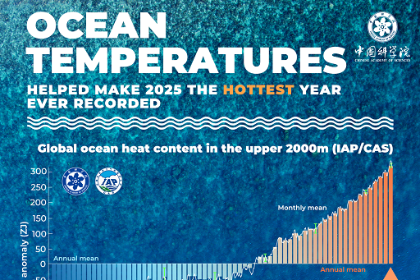Toward a low-carbon future


China and ASEAN should deepen and expand pragmatic cooperation in clean energy
This year marks the 10th anniversary of the proposal to build a closer China-ASEAN community with a shared future, and also the 10th anniversary of the Belt and Road Initiative. Over the past few years, China-ASEAN cooperation on clean energy, by virtue of the platform provided by green connectivity under the Belt and Road Initiative, has not only made fruitful achievements in industrial, economic and trade cooperation, but also advanced mechanism construction and the sharing of green development concepts, clean energy technologies and green management models.
In recent years, China-ASEAN trade cooperation has made notable progress against the headwind of sluggish global trade, becoming each other's biggest trading partner for three consecutive years. In the meantime, their common pursuit of green growth, featuring transition to low-carbon and clean energy, has advanced bilateral cooperation in green development.
The clean energy development strategies put forth by China and ASEAN respectively have sent a positive political signal as well. Since 2020, China's investment in renewable energy projects in Belt and Road countries has remained at more than $2 billion annually. Between 2000 and 2020, China's total public investment allocated to renewable energy projects in the ASEAN members accounted for 60 percent of total foreign public investment in the region over that period. The Plan of Action to Implement the ASEAN-China Strategic Partnership for Peace and Prosperity (2021-25), jointly formulated and released by the two sides in 2022, has further highlighted the importance of promoting knowledge sharing in renewable energy technologies and industrial cooperation. The Regional Comprehensive Economic Partnership agreement, which entered into force in January 2022, has also provided a critical opportunity for the two sides to bolster cooperation on new types of low-carbon energy industries.
Meanwhile, fueled by energy security concerns and greater competitiveness of green industries, China and ASEAN countries' complementary advantages in the clean energy industry have provided immense opportunities for bilateral cooperation in this field. According to forecasts by the International Energy Agency, ASEAN members' installed power capacity of solar photovoltaic and hydro power will surpass that of natural gas by 2035 and over 75 percent of electricity will be generated from renewables by 2040. The ASEAN members have a promising future in sustainable infrastructure, green hydrogen, etc., but are constrained by a lack of funding, underdeveloped technologies and imperfect laws and regulations.
China, as an electricity-transition pioneer among developing countries, can be a booster for the transition in ASEAN by providing green investment, green energy equipment and low-carbon technologies for the ASEAN members.
Over the past decade, China-ASEAN interactions on clean energy agenda have become more institutionalized via three major regional cooperation platforms — the East Asia Summit, China-ASEAN (10+1) leaders' meeting and the meeting of ASEAN, China, Japan and the Republic of Korea (10+3). China has not only strengthened dialogue and exchanges with the ASEAN members as a whole, but also advanced green partnerships with each ASEAN member state in accordance with their respective resource endowments and policy priorities, such as advancing a number of major hydro power projects with Myanmar and Laos under the Lancang-Mekong cooperation mechanism, developing offshore wind power projects in collaboration with Vietnam and the Philippines, and attaching great importance to cooperation with Malaysia in the solar photovoltaic industry.
Such priorities have greatly enhanced the two sides' resource utilization rate and the efficiency of bilateral cooperation. Aside from institutional improvements, China has also strengthened soft connectivity with the ASEAN members with regard to standard specification and technical management, among others. China's standard specification and green management models have gradually gone global through integrated technical and management support — such as planning and design, equipment manufacturing, engineering construction and operating maintenance in clean energy cooperation projects — becoming the name card of bilateral green connectivity.
Currently, against the backdrop of climate change and environmental problems, energy security concerns have further heightened the importance and necessity of bilateral strategic cooperation. In light of this, China and ASEAN should further cement the foundation for clean energy cooperation and combine the government-led green cooperation platforms (from top to bottom) with the diversified project cooperation mechanisms (from bottom to top) involving relevant companies, financial institutions and think tanks. By doing so, the two sides can further optimize their practice approach and cooperation pattern, so as to better build a regional community with a shared future for green energy.
To start with, China and ASEAN should integrate existing governance mechanisms and advance bilateral cooperation under a comprehensive framework.
The existing governance mechanisms, although very diversified, are relatively fragmented. Hence, the two sides should cultivate comprehensive cooperation platforms that are more professional, long-term and branded. They should further advance the construction of the China-ASEAN Clean Energy Cooperation Center and turn it into an institution that plays a central role in institutional guarantee, strategic planning and project implementation. In the meantime, the two sides should innovate cooperation in such areas as green finance to meet their cooperation needs, by both taking into account the whole situation and having an emphasis.
Second, China and ASEAN should seize the opportunities brought by the implementation of the RCEP to facilitate the establishment of regional technical standards and the building of green industrial chains in East Asia.
China should make full use of the principles and norms enshrined in the RCEP agreement, such as market access, economic and technological cooperation, and intellectual property rights, to align with ASEAN's green development strategies and digital master plan. The two sides should expand positive spillovers of green technologies and industry standard application during bilateral pragmatic cooperation and promote the coordination of regional clean energy industry standards and technical specifications. They should strengthen political mutual trust and lower the risks associated with cooperation, and at the same time, advance the building of a regional clean energy industry chain.
Finally, they should advance new third-party cooperation mechanisms with ASEAN playing a central role.
Green competition and cooperation models that many parties participate in could provide more diversified interest options, which helps break the absolute power structure among countries and their fixed benefit predilection and creates broader space for the coordination of interests. China can collaborate with developed nations such as the United States, Japan and European countries on green projects, align with such initiatives as the Blue Dot Network, Build Back Better World and Partnership for Global Infrastructure and Investment, and create a sound external environment for cooperation. It can also introduce third parties such as international organizations into cooperation to enhance the transparency of China-ASEAN cooperation and dispel some ASEAN countries' concerns over Chinese investments.
In the meantime, China should attach greater significance to global publicity of great cooperation examples to improve China's image as a green investor, so as to enhance local residents' favorability and strengthen "heart-to-heart connections" in green development.
Li Xinlei is a research fellow from the Research Institute of Contemporary Socialism and a professor with the School of Political Science and Public Administration at Shandong University. Sheng Xuemin is a research assistant with the Institute of Environmental Politics at Shandong University.
The authors contributed this article to China Watch, a think tank powered by China Daily.
The views do not necessarily reflect those of China Daily.

































